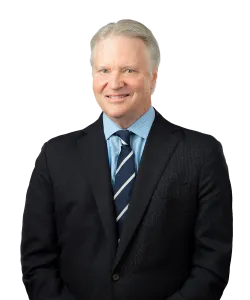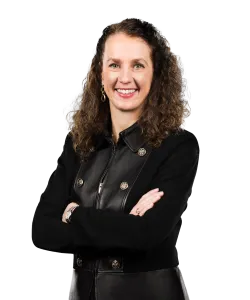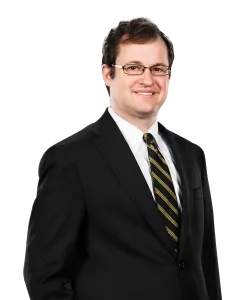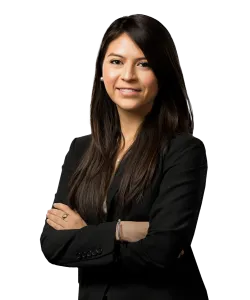Benefits of the Main Street Lending Program for Senior Living Facility Owners and Operators
Many senior living owners and operators have found that the Payroll Protection Program loan program either provides insufficient support to them or that they are ineligible for PPP loans. PPP loans are sized to only cover roughly two months of payroll and other qualifying operating expenses, and the uses for which PPP loan proceeds may be used and still benefit from the loan forgiveness are limited.
Moreover, the Small Business Administration affiliation regulations prohibit companies with more than 500 employees, including the employees of the affiliates of the applicant, from being eligible to obtain a PPP loan. Senior living owners and operators which are facing cash flow issues due to the COVID-19 pandemic may find that the Main Street Lending Program is helpful either as an adjunct to or instead of a PPP loan due to its higher employee counts for qualification, potentially higher loan amounts and greater flexibility in the use of proceeds.
The Main Street Lending Program is separated into two distinct facilities – the Main Street New Loan Facility (MSNLF) and the Main Street Expanded Loan Facility (MSELF).
Below are details on how the Program could be attractive to senior living facility owners and operators, and their lenders.
If you are interested in learning more about the details of the Program, including restrictions on the MSNLF and MSELF loans, which include certifications as to the outsourcing of jobs, union contracts, and union neutrality, and executive compensation restrictions, click on this link.
Why is the Program beneficial for senior living facility owners and operators? |
The Program provides a senior living facility owner and operator the ability to either upsize an existing term loan (more information on this approach is detailed in the section below) or take out a new loan. In order to incentivize lenders to participate in this Program, the government will take substantially all of the repayment risk by purchasing 95% of the loans at par value from the lender. In this environment, it would be very difficult for senior living facility owner or operator to upsize their existing loans or take new loans from traditional senior living facility lenders at attractive interest rates. However, the loan terms of both MSNFL loans and MSELF upsize tranches are very attractive since the interest rate is relatively low (the Adjustable-rate of Secured Overnight Financing Rate (SOFR) plus 2.5-4%) and both principal and interest will be deferred for one year, with a term of four years. By incentivizing senior living facility lenders to allow senior living facility owners or operators to upsize their existing debt, the Program will enable senior living facility owners or operators to obtain much-needed liquidity and avoid possibly complicated inter-creditor and covenant restriction since, in the MSELF, existing lenders are lending the additional funds and thereby consenting to this additional debt. For those senior living facility owners and operators which have 500 or less employees (after including the employee count of all employees of affiliates of the applicant), another benefit of the Program is that senior living facility owner and operator can participate in PPP loans and the loans offered under the Program. Note that borrowers are limited to participating in only one of the MSNLF, the MSELF, or the Primary Market Corporate Credit Facility. |
Why is working with the existing lender an added benefit? |
A senior living facility owner/operator working with an existing lender to upsize their loan is beneficial because it provides an avenue in which the senior living facility owner/operator lessens the risk of violating certain SPE covenants in their existing loan (such violations could potentially trigger recourse liability for guarantors through the bad boy guaranty). By working with an existing senior living facility lender, getting consent from that existing lender for MSNLF and MSELF loans would likely be much more streamlined, since the debt appears to be on beneficial terms and the existing lender does not bear most of the risk on the increased debt. Also, existing lenders are incentivized to make MSNLF and MSELF loans because the Program provides for lender fees associated with the loans and also provides liquidity to their senior living facility borrowers, so that they can continue to run their senior living facilities and pay their mortgage interest payments. |
What expenses does the Program cover? |
The loan must be a minimum of one million dollars. Senior living facility owners/operators can use these loan proceeds for paying payroll expenses, ground lease rents, real estate taxes, and utilities. Although the statutory language of the Program is not clear on whether using the loan proceeds for mortgage interest payments and scheduled prepayments of principal is allowed, we believe that it would be. Arent Fox will continue to monitor guidance that might clarify this issue. The loan proceeds cannot be used to refinance an existing loan or repay lines of credit. |
Are senior living facility owners and operators eligible borrowers under the Program? |
In order to be an eligible borrower under the Program, the borrower must have a business of no more than 10,000 employees or up to $2.5 billion in 2019 annual revenues. We do not yet know how or if affiliation regulations will be applied to the Program, whether the Federal Reserve will define affiliates more narrowly than the SBA has, or even if affiliates will be included in determining employee or revenue limits for borrower eligibility. As the Program is structured to determine program eligibility based either on employee count (up to 10,000) or 2019 revenues (up to $2.5 billion), and funding is based on a multiple of EBITDA, we believe the Program avoids many of the complicated employee “counting” and affiliation issues that have created challenges for loan applicants under the PPP, which established funding levels based on payroll costs. |
What is the difference between the Main Street New Loan Facility (MSNLF) and the Main Street Expanded Loan Facility (MSELF)? |
MSNLF: provides funding for a new unsecured term loan that
(a) $25 million, or (b) an amount when added to borrower’s existing outstanding undrawn debt does not exceed 4x 2019 EBITDA. MSELF: provides funding for an upsized tranche of an existing term loan that
|
How to apply for the Program? |
Details about the application process for the Program have not been released at this time. However, eligible lenders of the Program have been identified as US insured depository institutions, US bank holding companies, and US savings and loan holding companies. It is likely that that these lenders will develop their own applications for the Program. While waiting for more guidance on the application process, it may be helpful for senior living facility owners and operators to gather supporting documentation that substantiates why they need a Program loan. |
Contacts
- Related Industries
- Related Practices



